
If you are just starting out, it is easy to become overwhelmed by the variety of rock-garden plants available. However, many classic rock-garden plants are available in choice garden centers across North America. Here are some of the most adaptable, which can serve as the impetus for you to launch your new rock garden. Most of these selections stay fairly compact, under 6 to 12 inches tall and wide, and unless otherwise noted will thrive in full sun and well-drained soil.
1. Pinks (Dianthus spp. and cvs., Zones 4–9)
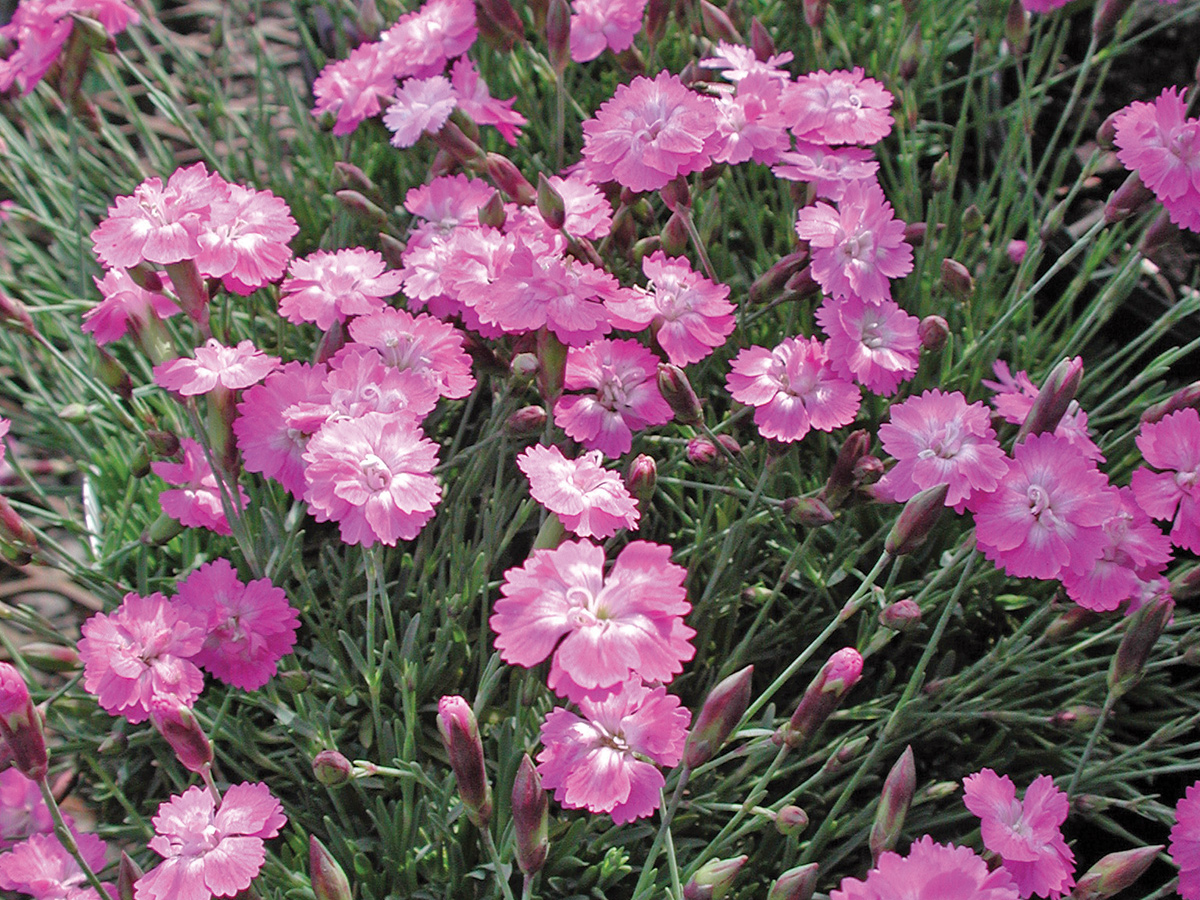
There are many tiny, cushion-forming treasures in this genus that are not impossible to find. ‘Tiny Rubies’ (pictured) is an especially striking form of cheddar pink (D. gratianopolitanus).
2. Wall cress (Aubrieta spp. and cvs., Zones 4–8)
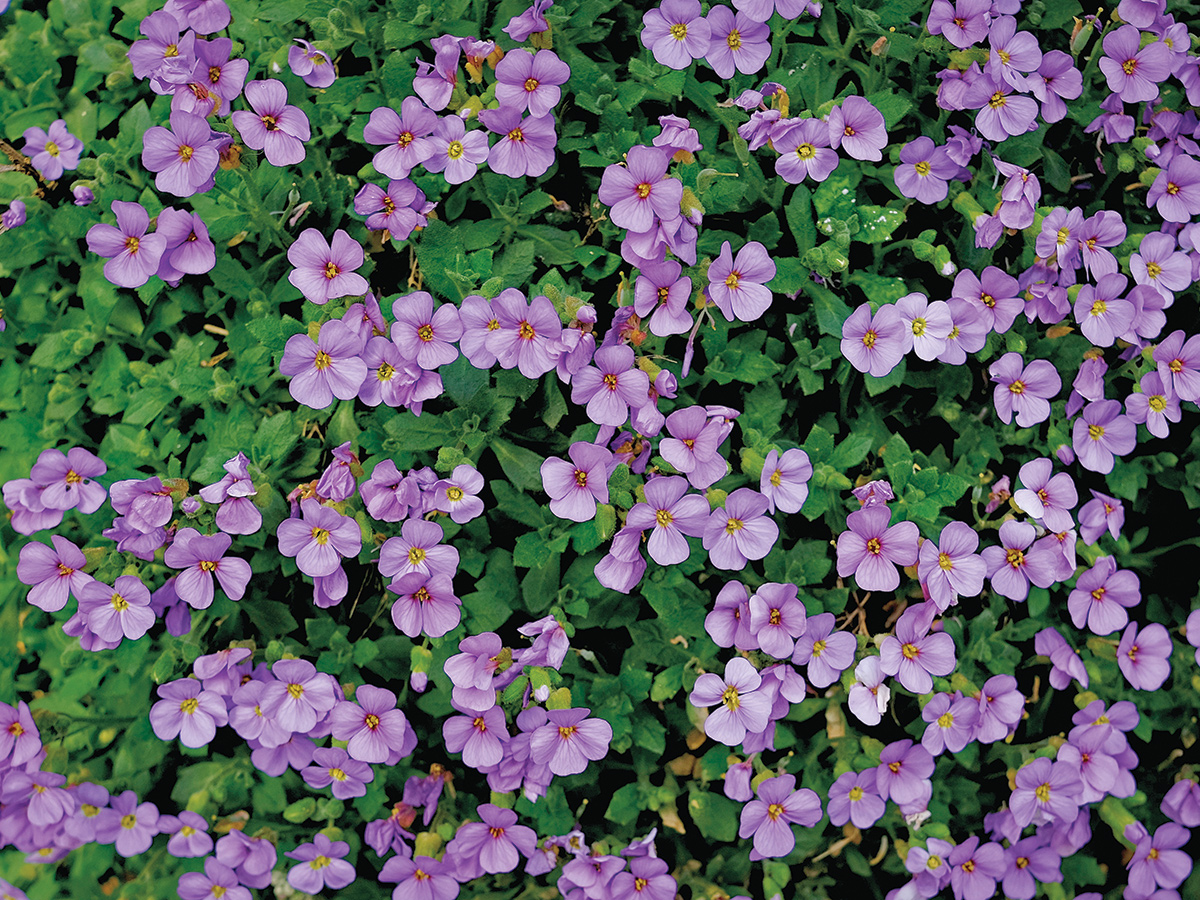
Wonderful mats of attractively patterned rosettes are smothered for weeks in spring with bright violet, blue, or pink blooms.
3. Mountain gold (Alyssum montanum, Zones 4–9)
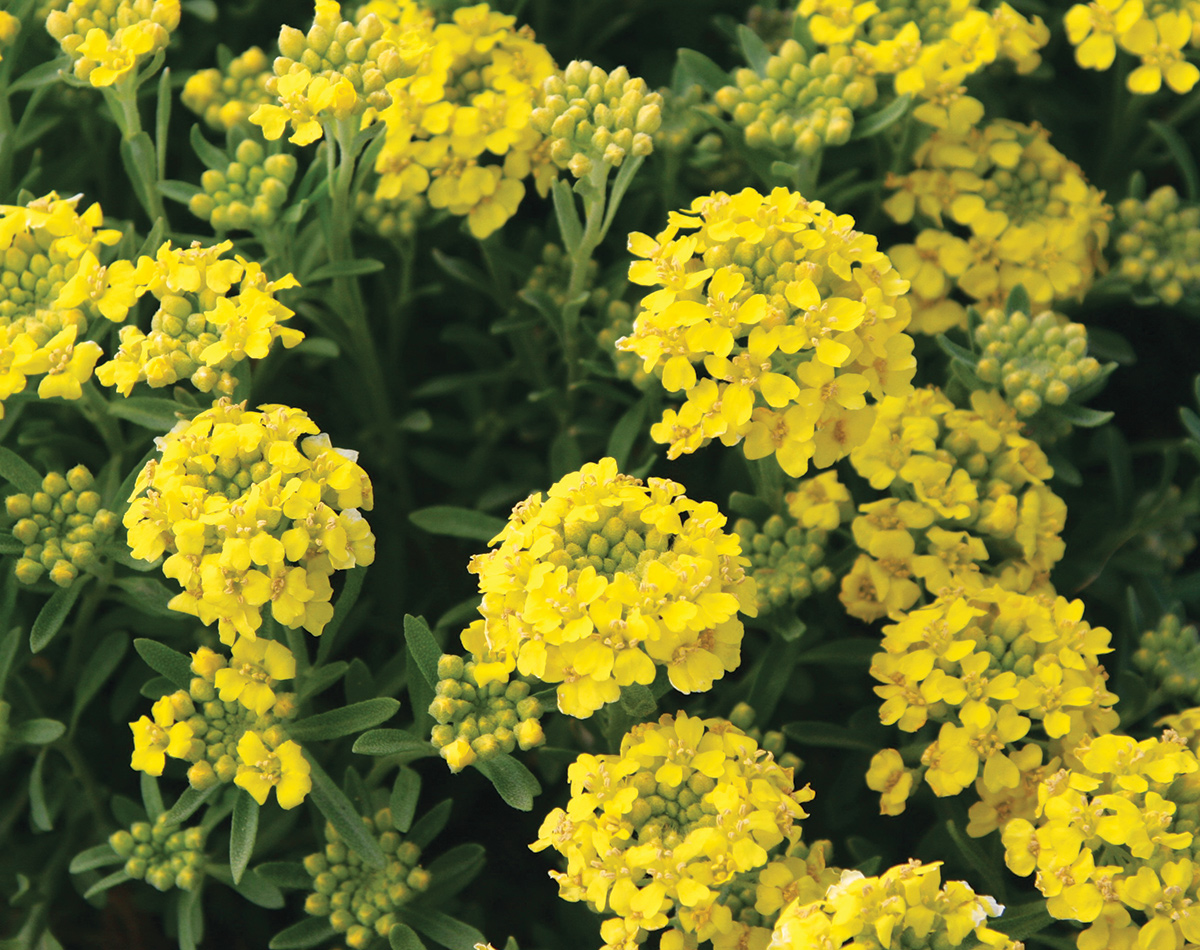
Finely textured silvery mats are obscured for weeks in April and May with the bright yellow flowers.
4. Rock Cress (Arabis spp. and cvs., Zones 4–7)
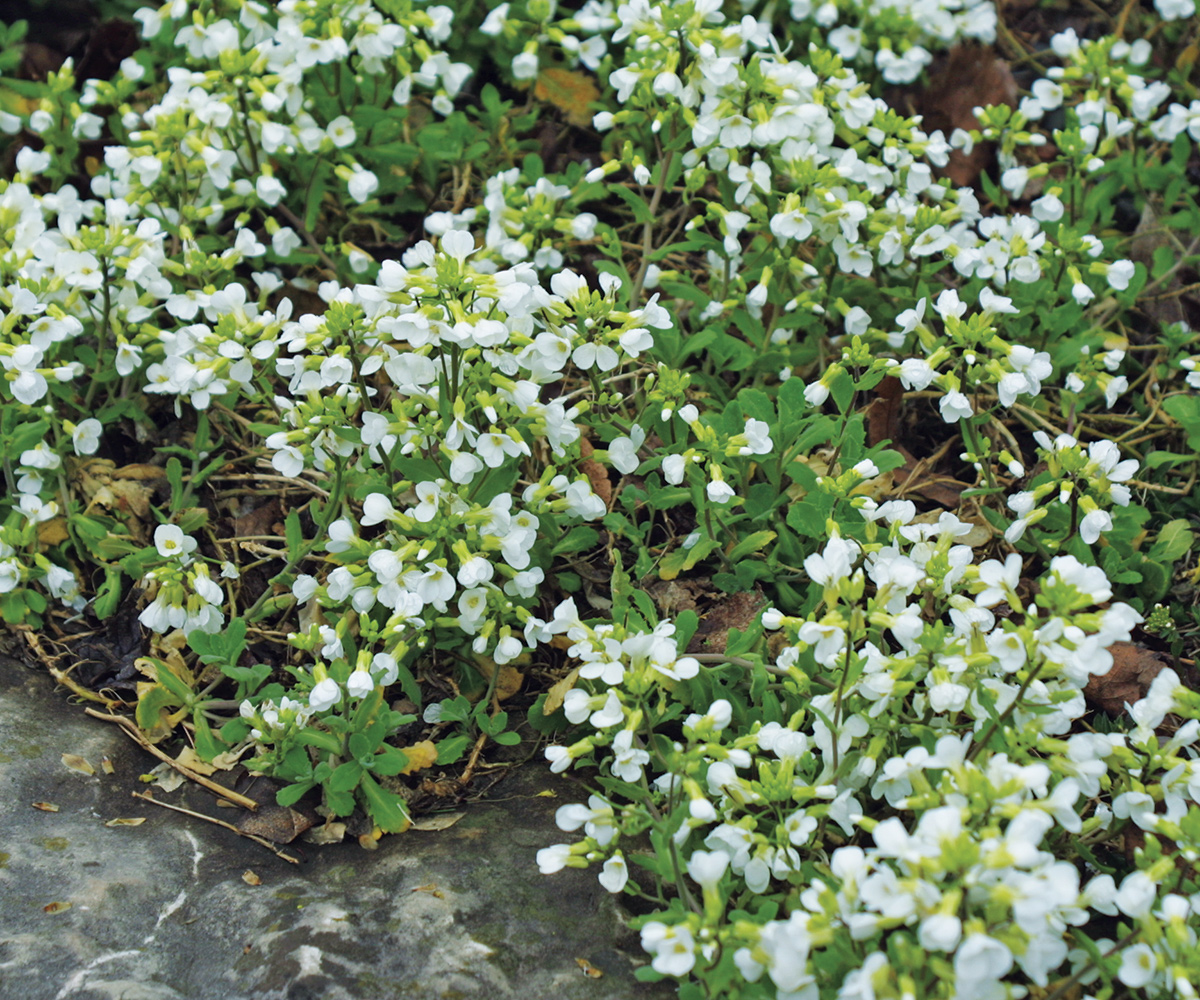
Several species of rock cress are occasionally available (all are excellent), although A. caucasica (pictured) is most common. White or sometimes pink flowers cover a mound of pleasantly pleated evergreen rosettes.
5. Sea thrift (Armeria maritima, Zones 4–8)
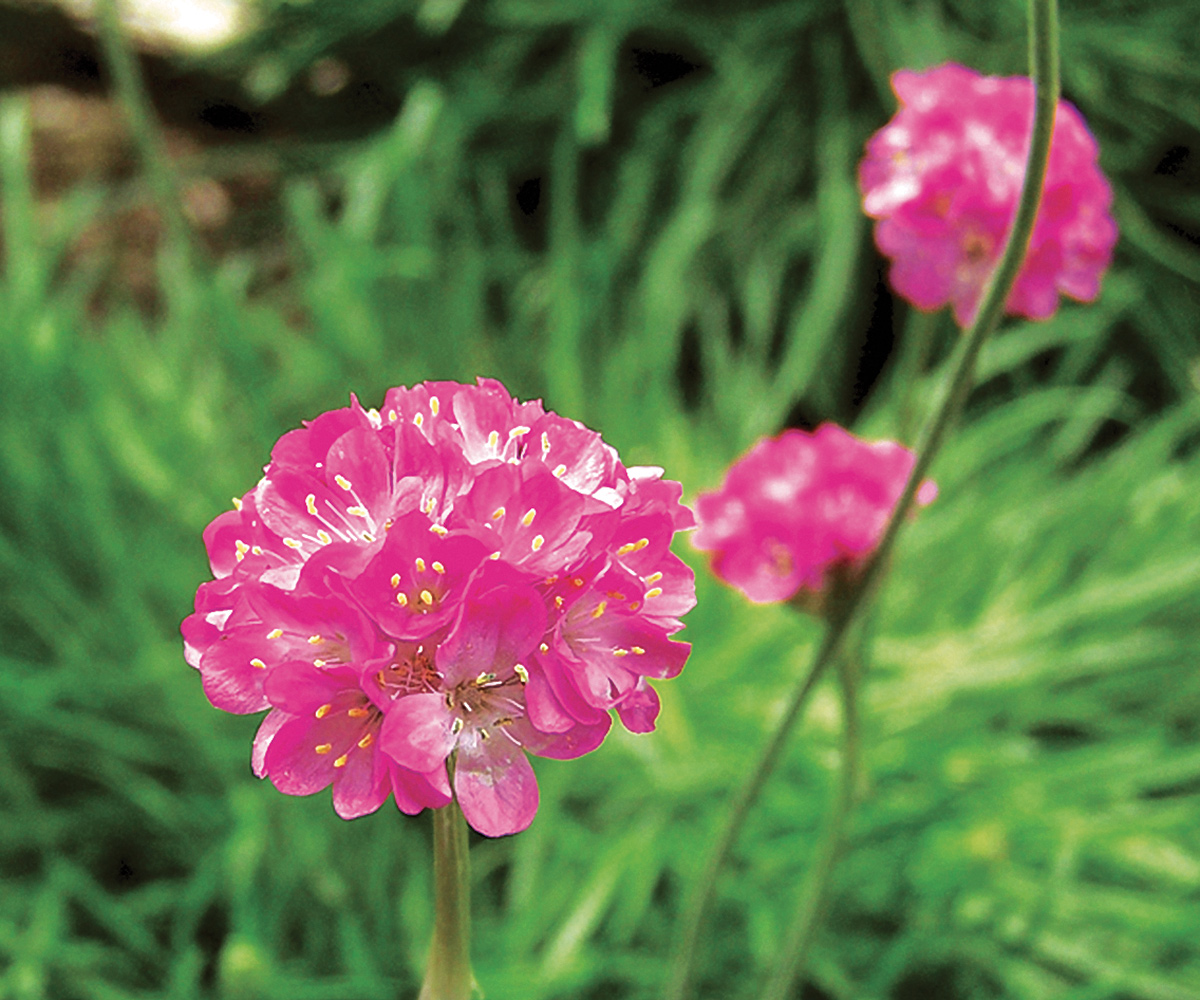
Shaggy mounds of narrow green leaves produce a long succession of flower clusters in many shades of pink and white.
6. Geranium (Geranium spp. and cvs, Zones 3–8)
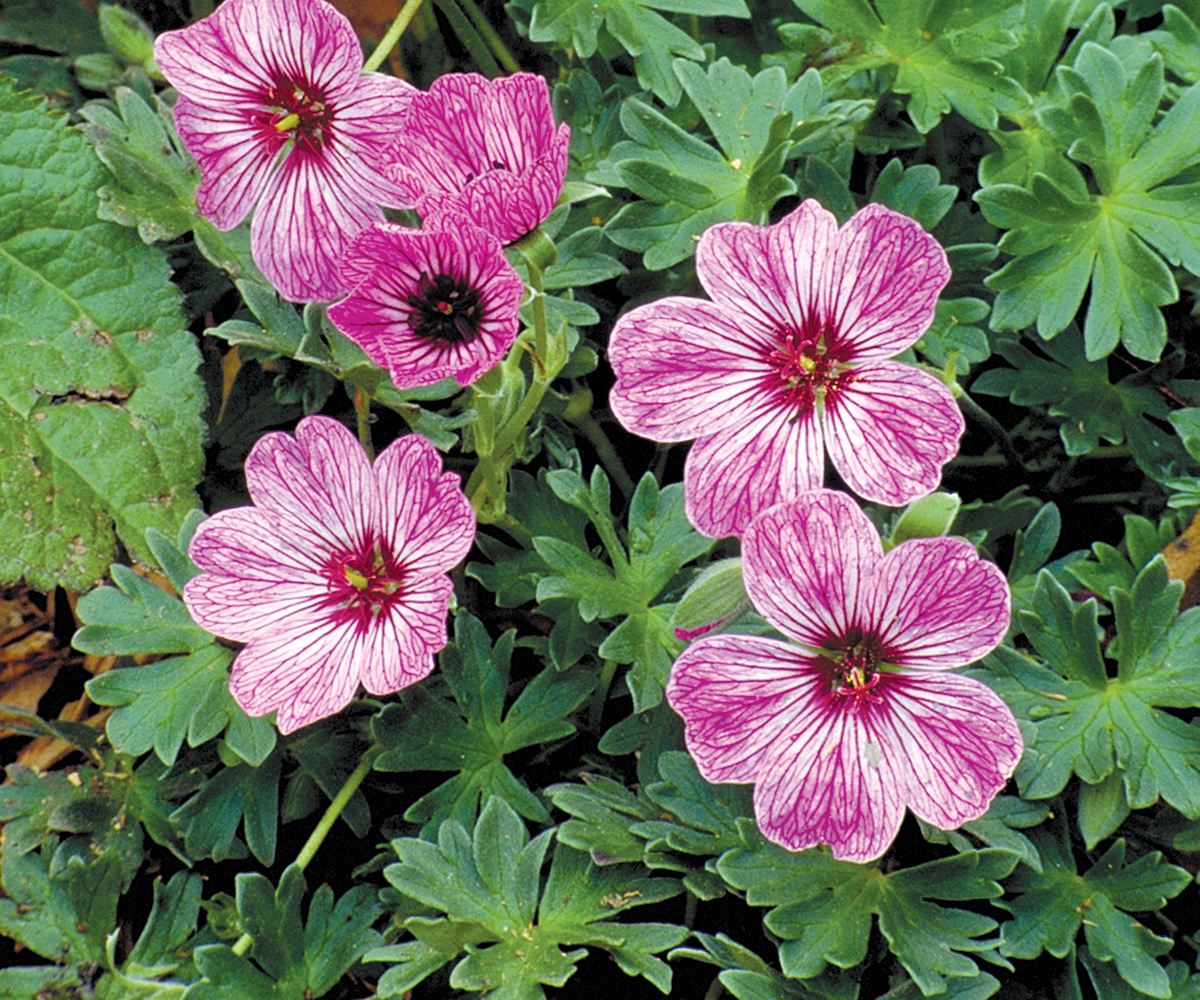
Smaller forms such as G. dalmaticum or G. cinereum (pictured) are frequently sold in nurseries. Their autumn foliage, tinted with orange and scarlet, is almost as showy as the blue or pink spring blooms.
7. Bellflower (Campanula spp. and cvs., Zones 3–9)
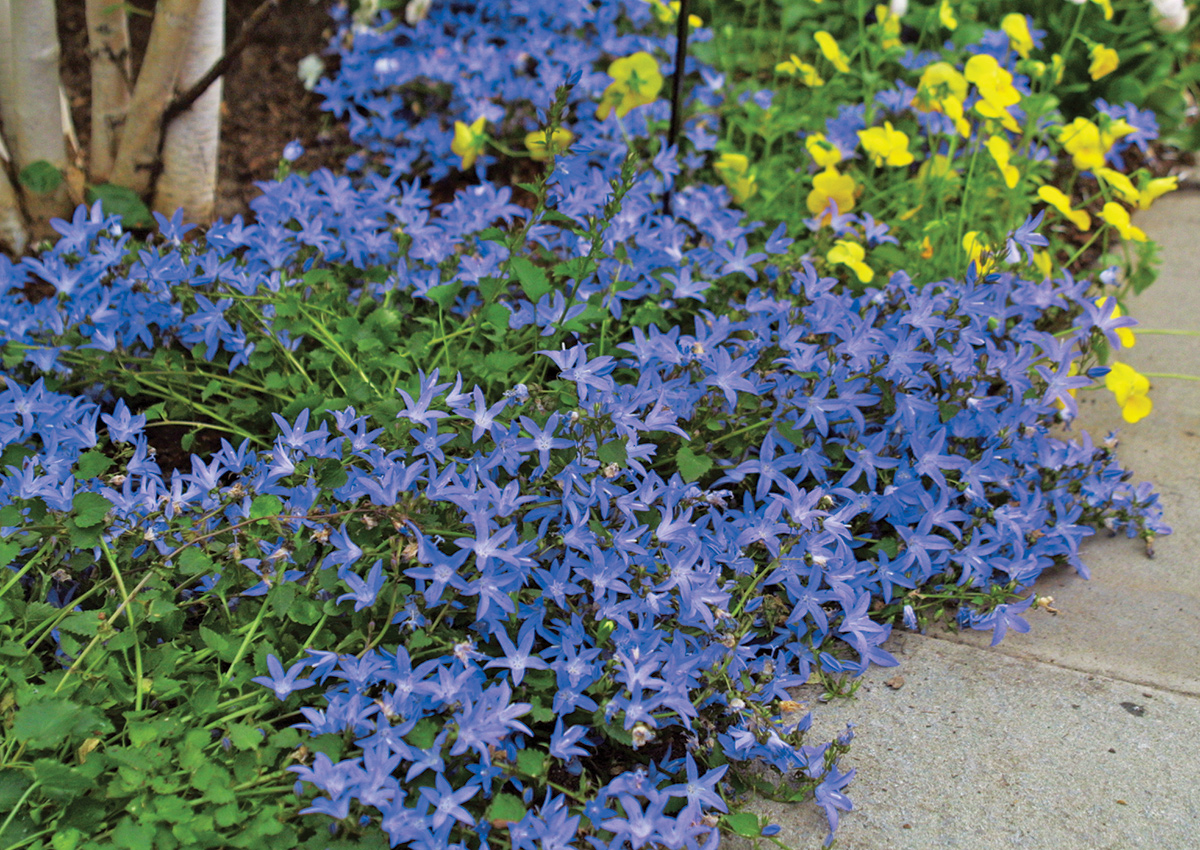
Many bellfowers are far too large for rock gardens, but C. portenshlagiana (pictured) and C. garganica love rocks and walls. These diminutive species make mats of bright evergreen, ivy-scalloped leaves that are hidden in early summer by violet-blue flowers.
8. Pussytoes (Antennaria spp. and cvs., Zones 5–8)
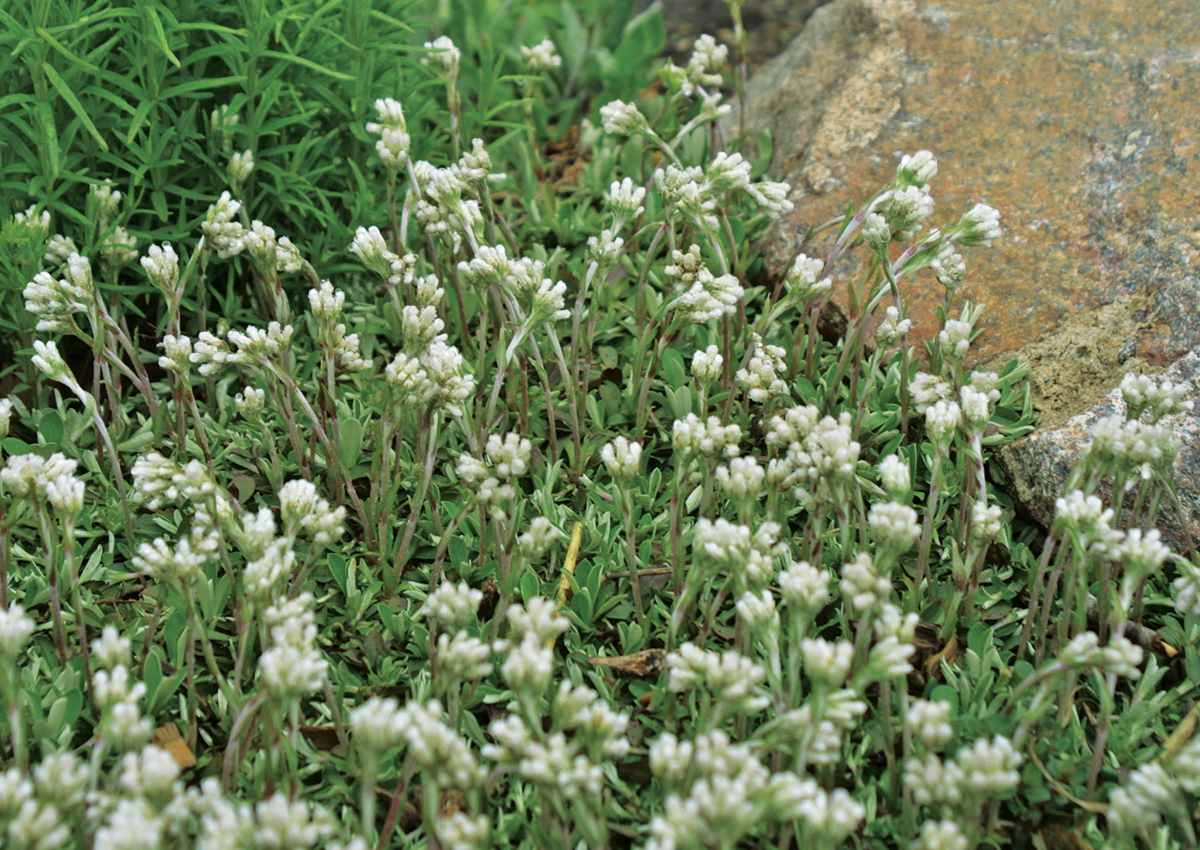
Flat silvery white mats of rosettes make for an ideal plant between paving stones and a foil for green-leaved plants in the rock garden.
9. Dwarf bearded iris (Iris pumila cvs. Zones 3–10)
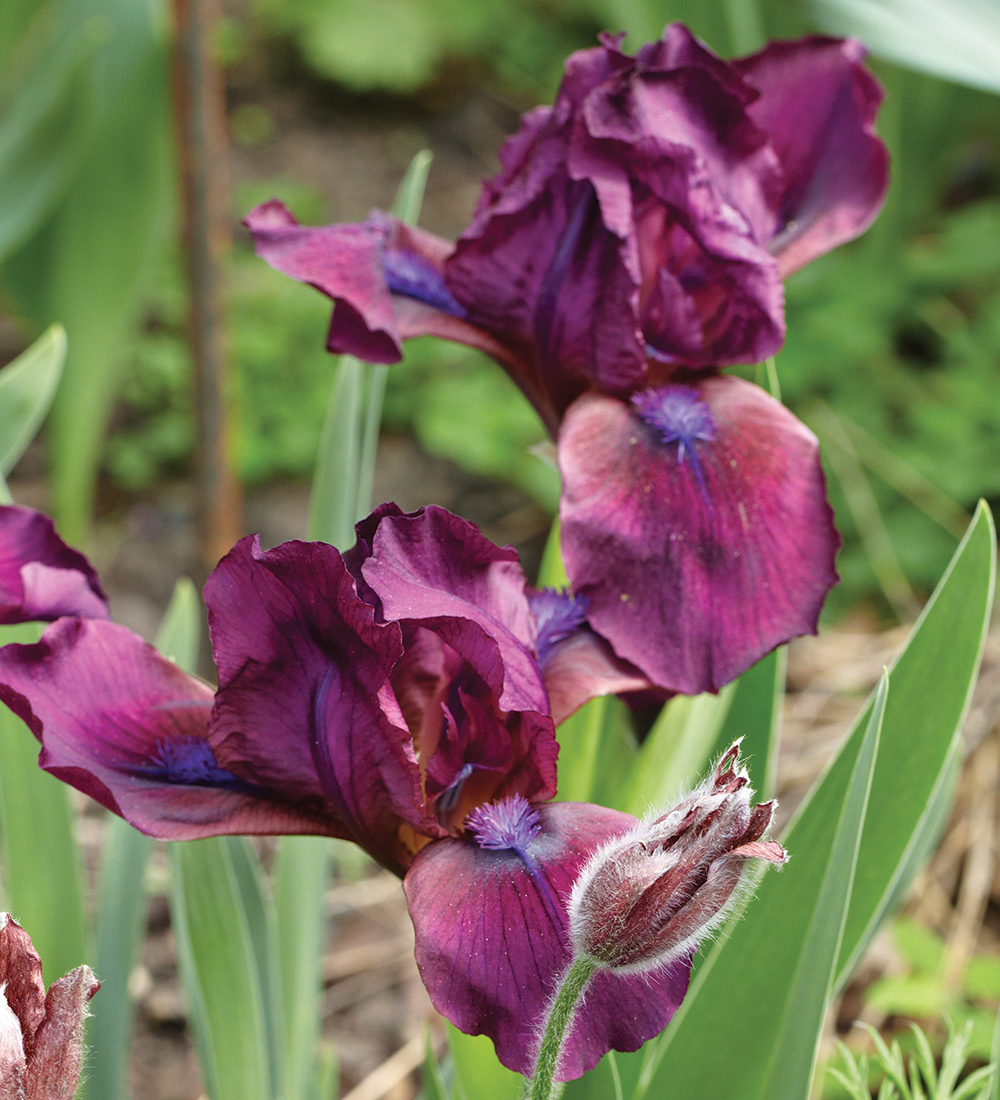
There are countless bulbous and woodland irises that are available for rock gardens, but dwarf bearded irises like ‘Cherry Garden’ (pictured) are especially beautiful among rocks. Their lavish bloom season makes up in gusto for its rather short duration, and the spear-like foliage makes a good contrast to the predominant mounds and mats of rock gardens.
10. Creeping phlox (Phlox subulata and cvs., Zones 3–9)
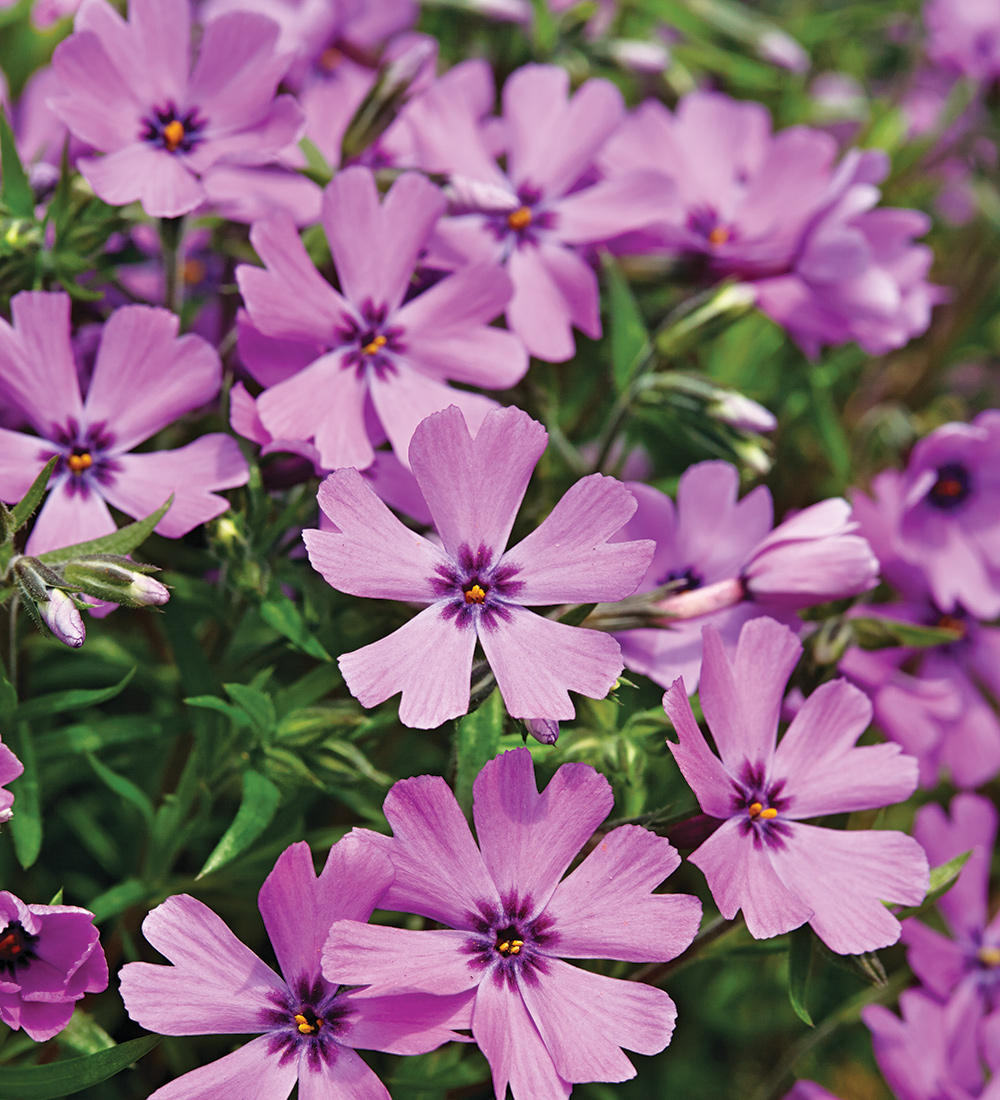
Few plants are more widely available (or treasured) than our native phloxes. They may only bloom for a few weeks, but the bright green mats of foliage are never more beautiful than when tumbling among rocks.
11. Primula (Primula spp. and cvs., Zones 3–9)
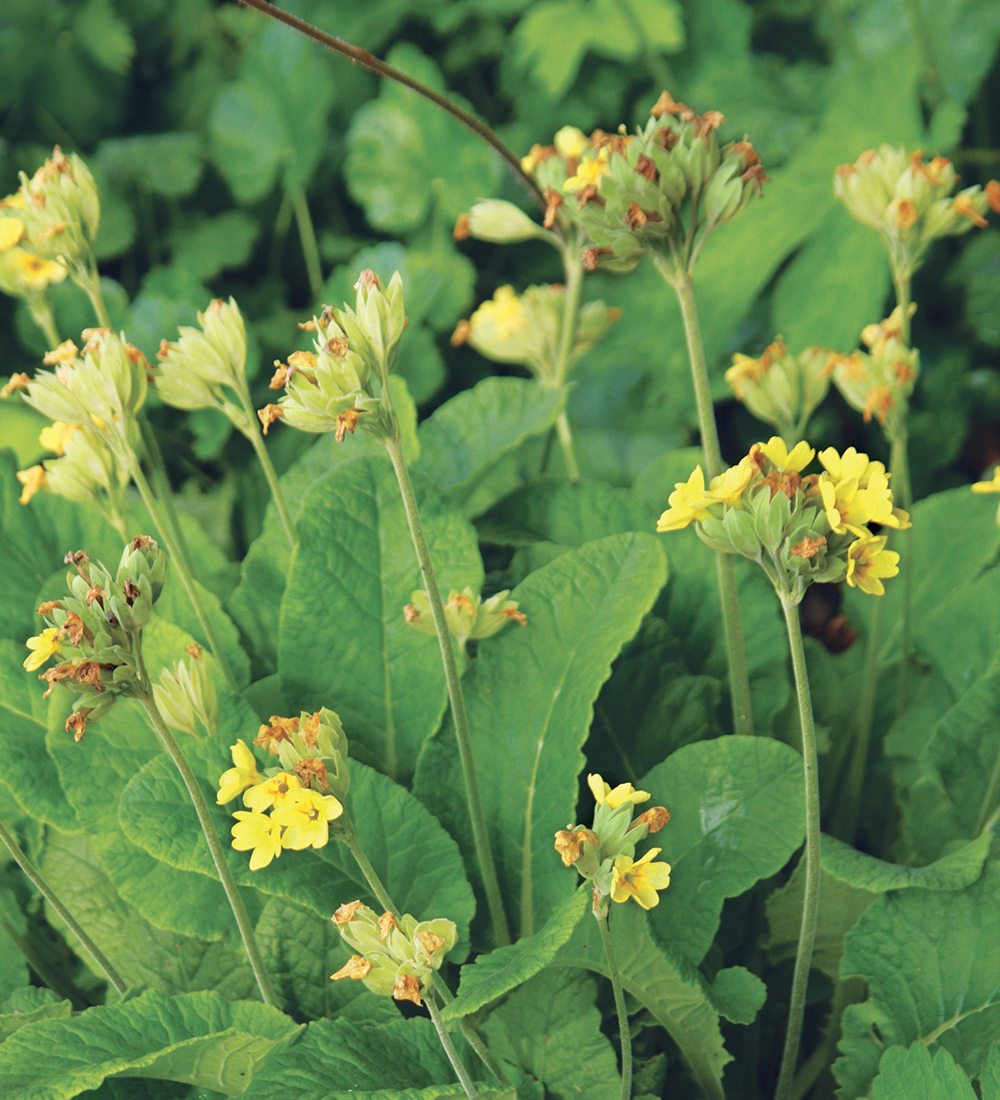
Best grown in partial shade, this genus was practically designed for rock gardens. Common primrose
(P. vulgaris), oxlip (P. elatior), and cowslip (P. veris, pictured) are wonderful performers in rock gardens.
12. Penstemon (Penstemon spp. and cvs., Zones 3–9)
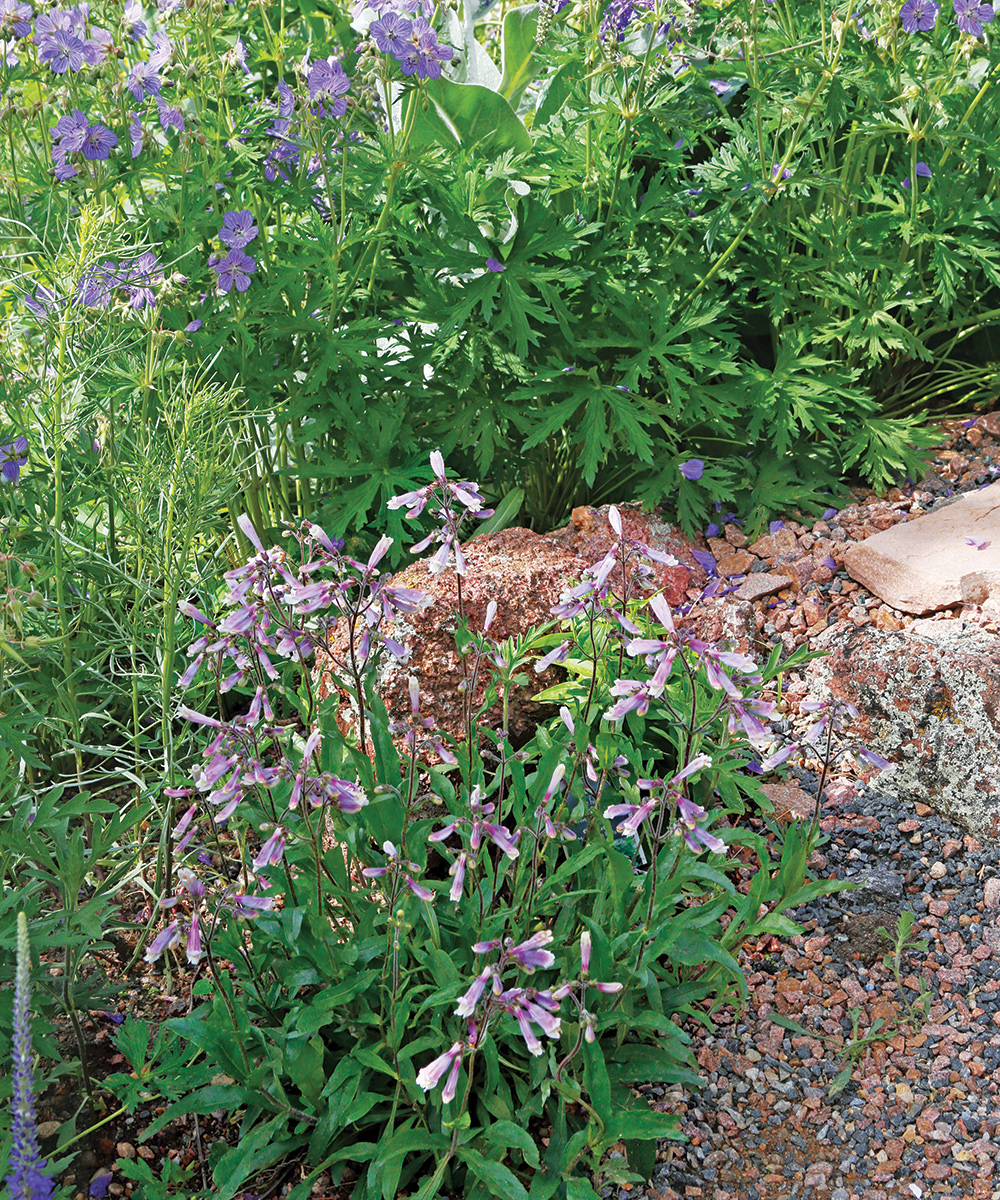
This enormous genus of North American natives is full of miniatures, although nurseries mostly stock larger plants. Look for pineleaf penstemon (P. pinifolius) or hairy penstemon (P. hirsutus, Zones 4–8, pictured), which both bloom for a long stretch in early summer.
Panayoti Kelaidis is the senior curator and director of outreach at Denver Botanic Gardens.
Fine Gardening Recommended Products

ARS Telescoping Long Reach Pruner
Fine Gardening receives a commission for items purchased through links on this site, including Amazon Associates and other affiliate advertising programs.

isYoung Birdlook® Smart Bird Feeder with Camera
Fine Gardening receives a commission for items purchased through links on this site, including Amazon Associates and other affiliate advertising programs.



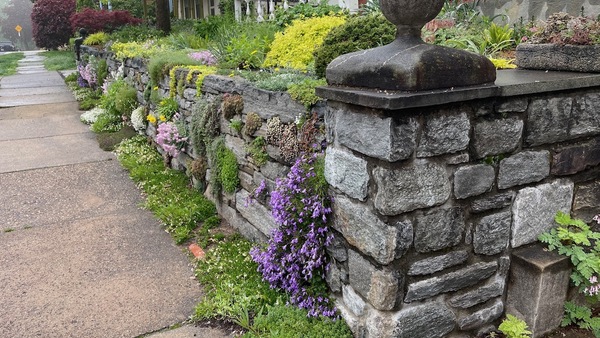
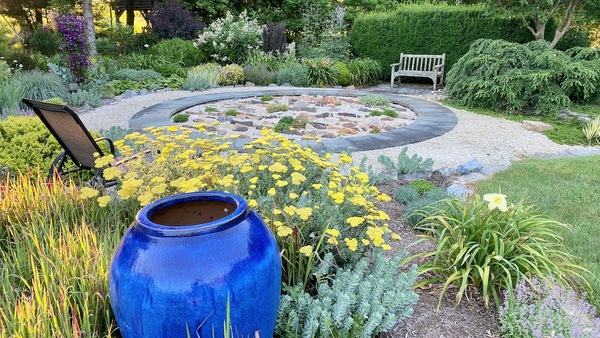

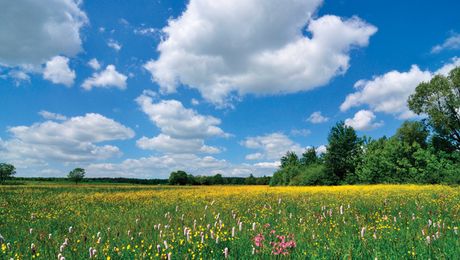











Comments
Log in or create an account to post a comment.
Sign up Log in